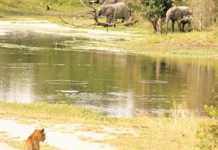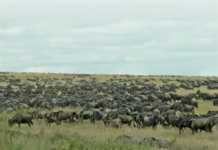In the previous century it became too easy and too quick to achieve good production figures by applying chemical fertilisers. There was, of course, a price to pay, but it was economically viable, or so it seemed. Despite the smugness, there were a number of voices crying in the wilderness, urging farmers not to go down that route. They were, however, generally ignored.
Now, although they have passed on, many have come back to life through their writings and in the works they initiated. One of these is Robert Rodale, a wealthy publisher in the US with a passion for agriculture. I first read his work in the early 1970s. This was a time in which bumper maize crops were being grown in South Africa, but the problem was as it always is with over-production – the maize price was below par.
Bearing in mind over-production was being blamed for the low grain price, what Rodale had to say about this scenario stunned me. He maintained that the real source of the problem was the high cost of production, claiming that the energy required to produce 1kg of maize was greater than the energy in 1kg of maize. Not only is this unsustainable, it also implies that the grain has to be sold at a price many consumers can’t afford. And fewer buyers result in surplus grain.
Was he right? Just think of the billions of people around the world who go hungry each day. For them, food has become unaffordable. Yes, bad governance is a major cause of this horrific state, but it can’t be denied that agriculture has shifted into the bracket of growing food for the wealthy.
Research station
Rodale wasn’t just a talker. He set up a research station in Pennsylvania to compare conventional and organic farming. Organic farming, of course, focuses on producing healthy food by building natural soil fertility and avoiding the use of toxic chemicals.
The Rodale farm started in 1981 and is still operating. I understand it has the longest running production scale of organic farming trials in the world. The major soil fertility building blocks used for the organic plots are either manure or legumes. And most readers will be surprised to hear that the long-term yields of the organic lands are as good as the chemically fertilised plots. The plots are large enough to allow for standard soil preparation, planting and harvesting practices.
In good years, the chemically-fertilised plots have somewhat higher yields, but in dry years the organic plots are markedly superior. When considering this, it’s important to keep in mind that the rainfall at the Rodale farm normally exceeds 1 000mm/year.
Important
The reason for the higher yields of the naturally-fertilised plots is that their water infiltration rates are more than double that of the chemically-fertilised lands. This fact is of paramount importance for South African farmers. Even more important is the fact that the energy input of the biological plots is a mere 45% of that of the conventionally farmed plots.
The Rodale farm has thus proven over a long period of time that biological fertility is as good as chemical fertility in terms of crop yields but, more importantly, it slashes production costs.
John Fair is a leading expert on pastures and founder and head of the SA Biofarm Institute in Harrismith. Contact John on 058 622 3585 or at [email protected]. Please state ‘Biological farming’ in the subject line of your email.













